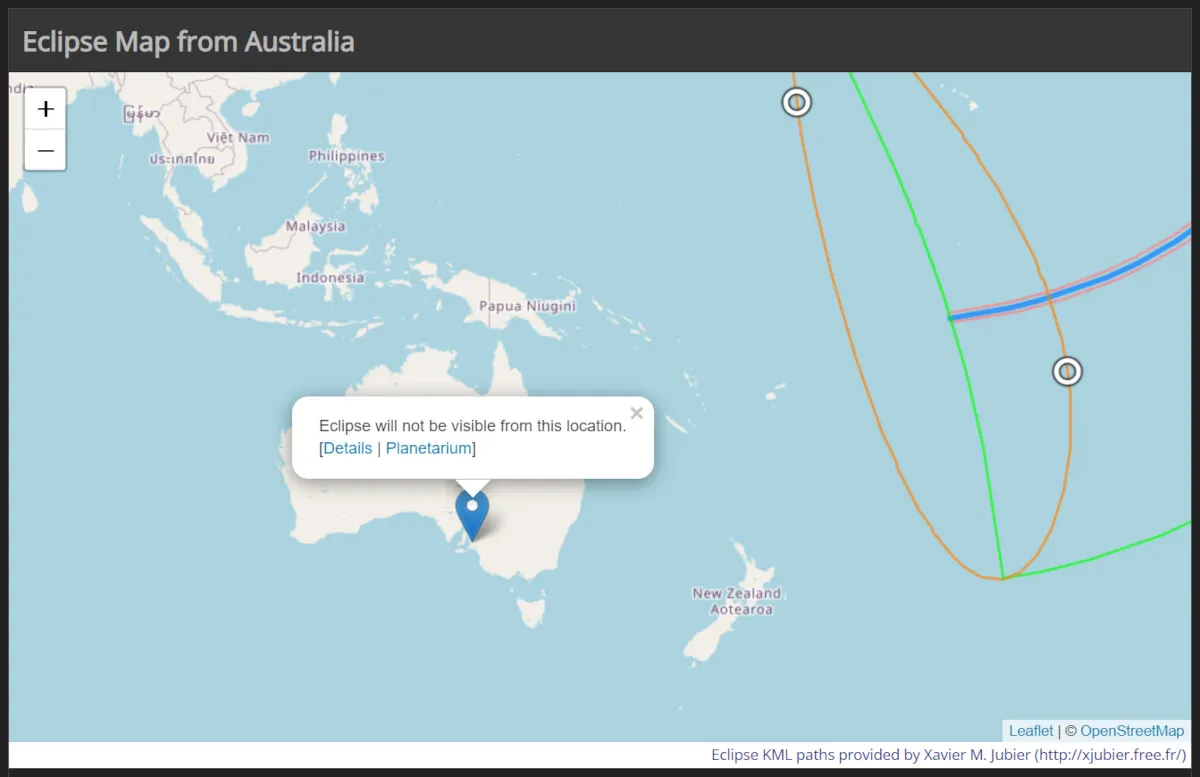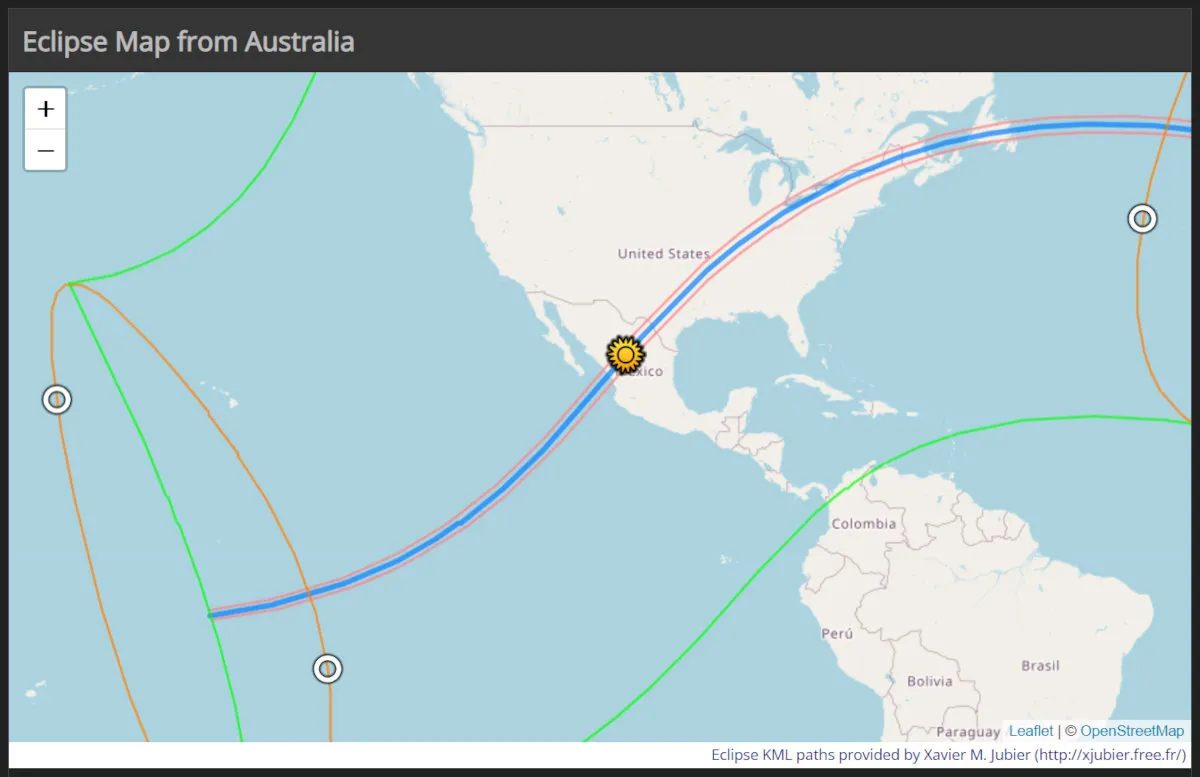
I got quite excited scrolling Live Science the other day when I saw an article about an upcoming solar eclipse just over a month away in April.

But, as I found out a short time later while looking at The Sky Live website, it won't be visible at all from where I live. A little disappointing, but oh well!
Reading the Map
You can see in the second image the visibility of the eclipse displayed as a margin. Totality is marked between the narrow orange lines in the centre: with the blue line running through. From these vantage points, the eclipse will last from 3 to 4 minutes depending on location, and a complete shading of the sun by the moon can be seen ("eclipse totality").
The Best Viewing
These places include parts of the Mexican states of Sinaloa, Nayarit, Durango and Coahuila and parts of the US states of Texas, Oklahoma, Arkansas, Missouri, Kentucky, Illinois, Indiana, Ohio, Pennsylvania, New York, Vermont, New Hampshire and Maine. Some of South East Canada will also be good for viewing with totality visible from parts of Ontario, Québec, New Brunswick and the Island of Newfoundland. Regions surrounding these will also have excellent viewing, though the eclipse as viewed will be partial, becoming more partial the further away you get from that central blue line. However, as the maps shows, everywhere within the broader green lines — pretty much the entirety of continental North America — will view this eclipse in some form. Lucky! 😄
Have a look at the map for yourself and let me know if you're going to see the April 8th Eclipse.
Look After Your Eyes
Here's the part where I write a few words about not hurting your eyes. I can only do so much as they're your eyes and so your responsibility. If you plan to gaze upon this upcoming total eclipse and wish to protect your visual connection to this beautiful world, you need to know what you're doing. For that, I defer completely to the US National Parks Service webpage precisely on this topic: How To View A Solar Eclipse Safely
Apparently, according to that page, the only time it's safe to view an eclipse directly is when it's a total eclipse and only during that brief (3 to 4 minute) period of totality; when the majority of the sun's light is blocked by the moon. This only applies for those viewing locations where totality will be visible, so make to check the map! And if you're going to do some eclipse-watching, read the damn safety page...
A Long Wait
The next total solar eclipse visible from Australia won't be happening until 22 June 2028 so pay some mind to how astronomically fortunate you are this year if you live in the US, Canada or Mexico!
Hopefully there's a few Hivers out there with the equipment to capture some footage or photography of this upcoming eclipse. I suppose we'll see!
-Sing
Both images courtesy of theskylive.com